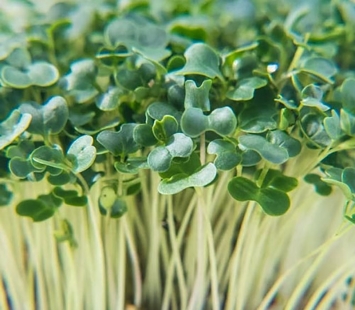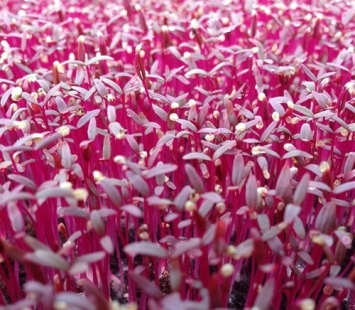Microgreens
Description
“Microgreens” is a commercial term used to refer to the young seedlings of different types of edible vegetables in the second stage of the plant’s life, after sprouting and prior to baby greens or fully grown leafy greens. They appear in a range of colors and shapes, but often have tiny green leaves and thin yellow-white stems. Microgreens can be grown either in soil or hydroponically.
Microgreens come in many varieties and have a range of mild, spicy, sweet, savory, earthy and other flavor profiles. Some of the more popular varieties include: broccoli, leeks, sorrel, pea shoots, sunflower shoots, cilantro, wasabi, purple radish, and wheatgrass/catgrass.
Microgreens are high in vitamins, antioxidants, and minerals. They are more nutrient dense than fully grown vegetables, and may be easier to digest for some.
How to Prep
Microgreens are best served fresh as a topping or final add-in so that they retain all of their nutrients, although they may be lightly cooked.
Add fresh microgreens to almost any meal: salads, smoothies/juices, eggs, sandwiches, burgers, pizza, pasta or rice dishes, meat, fish, tacos, yogurt, or oatmeal.
Microgreens also make a great snack on their own!
Storage
Microgreens are easy to store. Just keep in the clamshell they come in and keep in the refrigerator. You can store in the crisper or main area of your refrigerator as long as it’s not too cold.
The shelf life for microgreens grown in soil tends to range from 3-7 days after harvest. They tend to be slightly less expensive than hydroponically grown microgreens, which have a longer shelf life of about 2 weeks or more.
Special thanks to Metro Microgreens, a FRESHFARM vendor, for providing information for this page.

